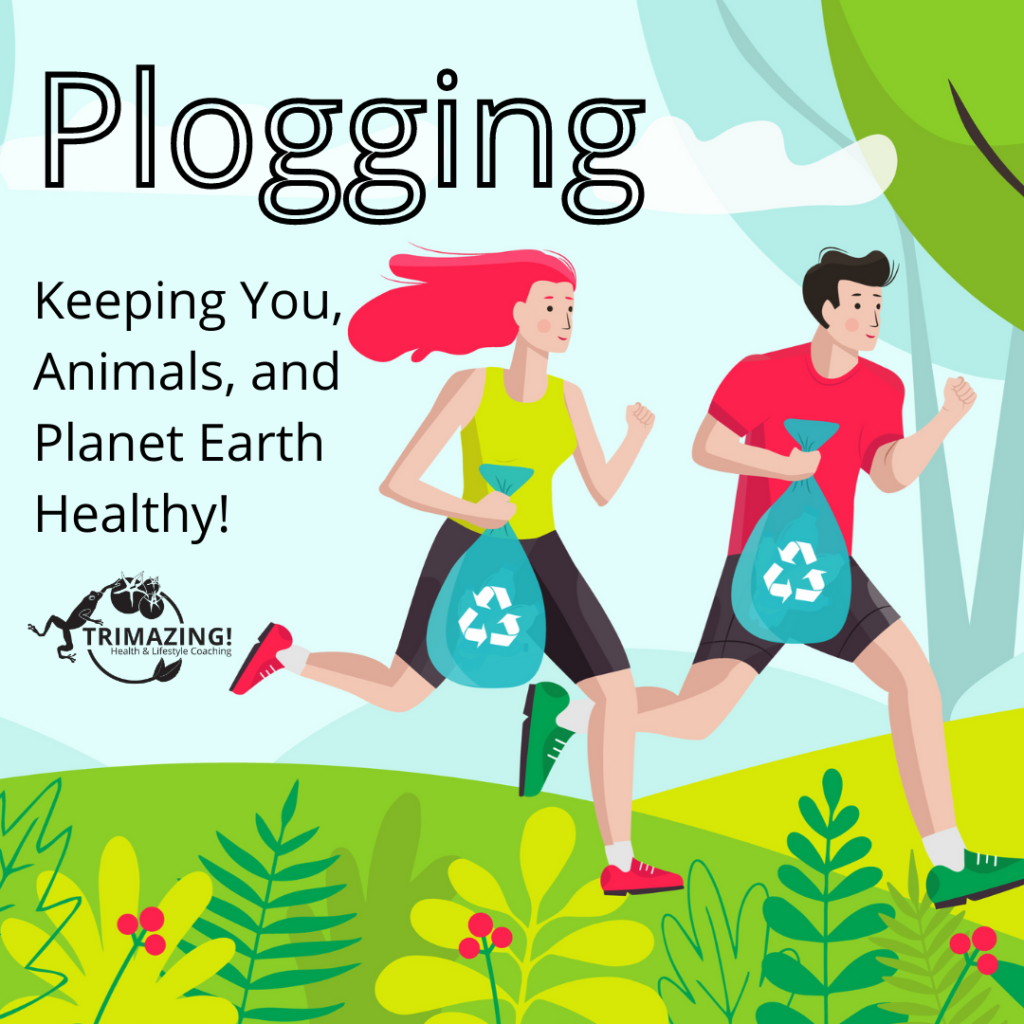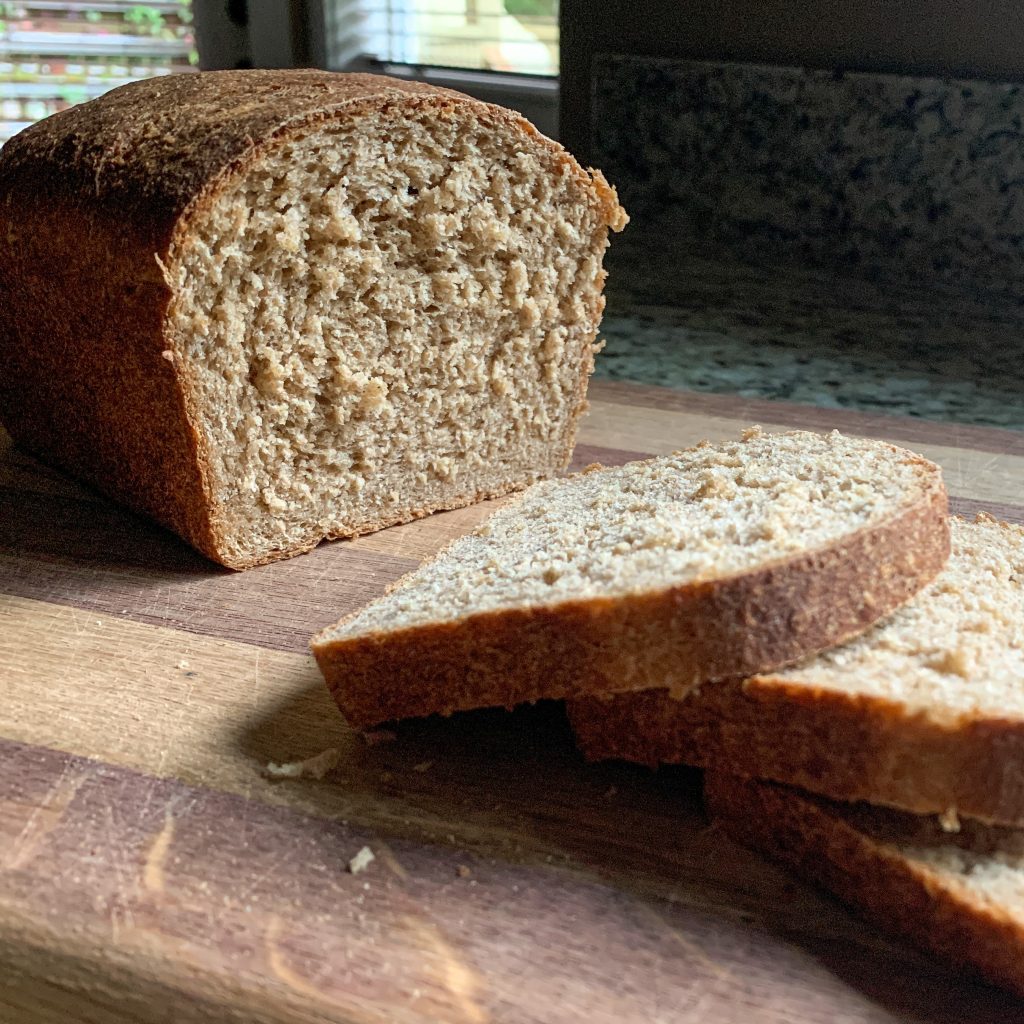Goodbye Garbage Can!
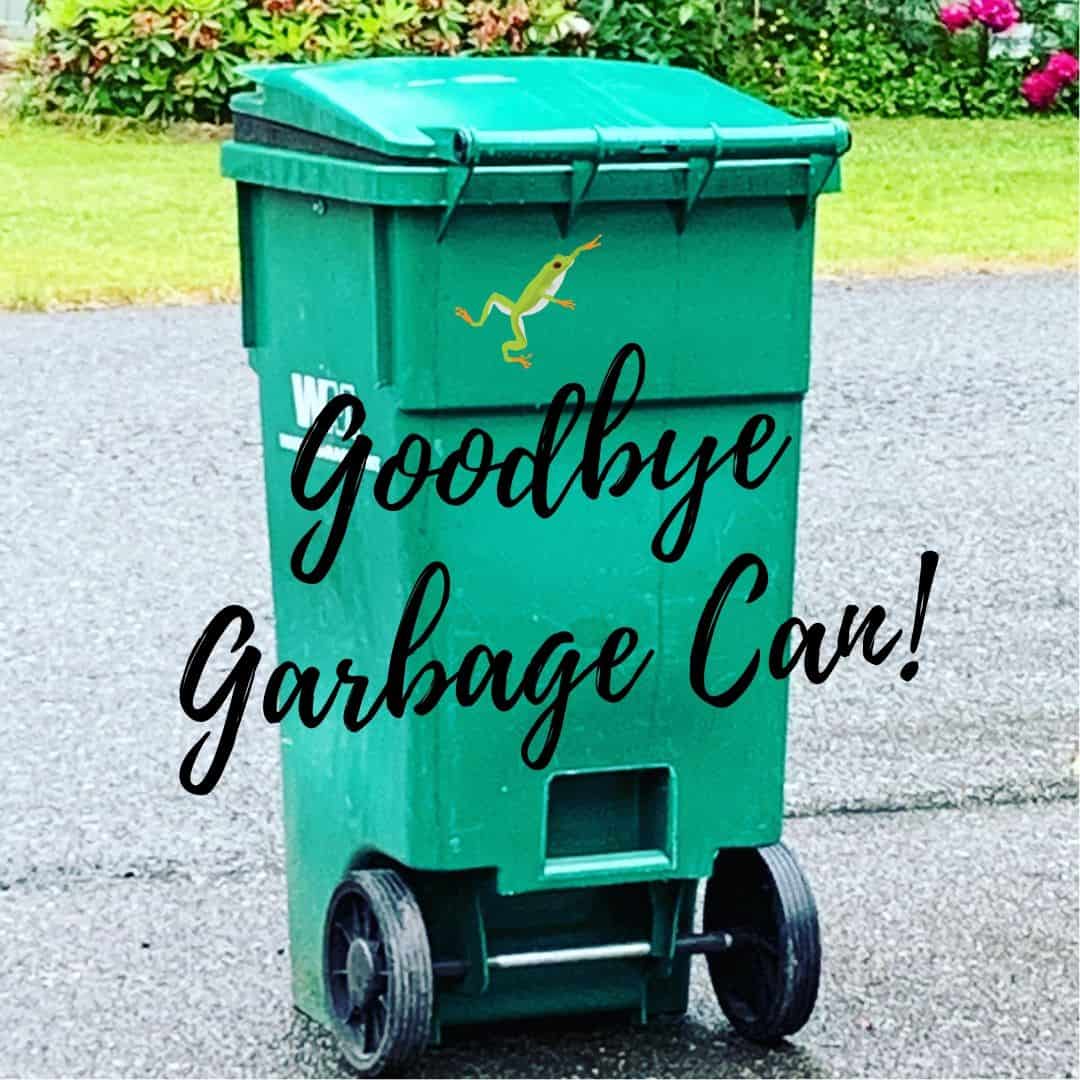
Goodbye Garbage Can!
Well, we did it! We gave our municipal garbage can the boot and had Waste Management come take it away. We just weren’t using it and couldn’t see paying for it every month anymore.
Six months ago, we challenged ourselves to see if we could reduce our garbage to the point where we didn’t need the municipal can anymore. I knew we could, Alan wasn’t so sure. Besides reducing garbage, we also worked on decreasing our recycling. If you’ve been following the Trimazing! blog for a while, you’ve seen our monthly garbage and recycling reviews (What’s in Your Garbage?, Garbage Follow Up, No Foolin’, What a Bunch of Garbage, Oh Shit!)—this will be the last one until we mass enough trash to warrant a drive to the dump ourselves, which should be in six to twelve months time! But I wanted to share what our process was, what we’ve learned overall, and how we are going forward.
Our Process
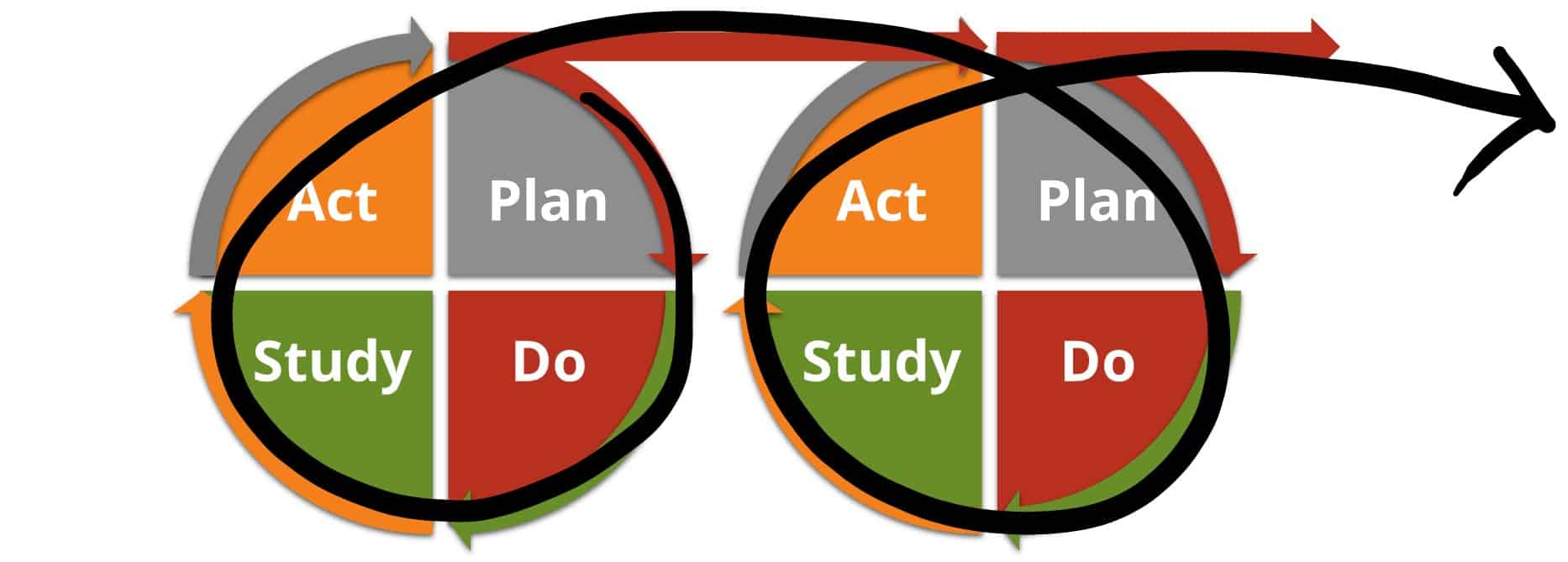
Deming’s Plan, Do, Study, Act Cycle of Continuous Quality Improvement
For implementing our zero waste program at our house, we used Deming’s Plan, Do, Study, Act process of continuous improvement. It was a process Alan and I were familiar with with our healthcare and management backgrounds. Deming’s process incorporates critical thinking to improve process and allows for continuous quality improvement as you cycle through the model in a circular route over and over, like a coil of a spring. Here are the parts of the process:
Plan
In this phase, you identify the problem, think about what the issues might be, how you might get to the desired results, and decide how to test it out. For us, our problem was the amount of garbage and recycling we had. We brainstormed the issues, such as the potential for smelly garbage, packaging, having guests over who were unfamiliar with zero waste, home improvement impact on our waste stream, breakage, inability to find zero- or low-waste alternatives, etc. To test it out, we decided to go accumulate our garbage and recycling each month and go through it to determine what was filling up our trash and recycling bins. From this, we would go through the process again to develop plans for the things/actions that contributed to our trash.
Do
In the Do phase, you try the process you developed in the Planning stage, often a test run on a small scale. You gather data during this time. We did this month-to-month.
Study
This phase, often called Check, evaluates the data to see if your plan moved you in the direction you wanted to go, and how well. During this time you look for areas of improvement, things you can do to improve your results. This was illustrated in our monthly garbage and recycling reviews. I know it sounds gross, but you have to go through your garbage and really see what the issues are for you. We literally dumped our trash on the garage floor and sorted it. And note, if you don’t have food waste in your garbage and if you clean out your recyclables (which you should do), your garbage and recycling doesn’t smell! On a day-to-day basis, you don’t see what’s piling up, but at the end of the month, it’s pretty clear!
Act
Next, choose the best solution from the data you studied and implement. We had a lot of great discussions on what we were both willing to do to make improvements. Alan and I are not always in the same place on this, but we are both okay with allowing the other to be in the place they are—overall, it still reduces our trash accumulation.
And then repeat the process.
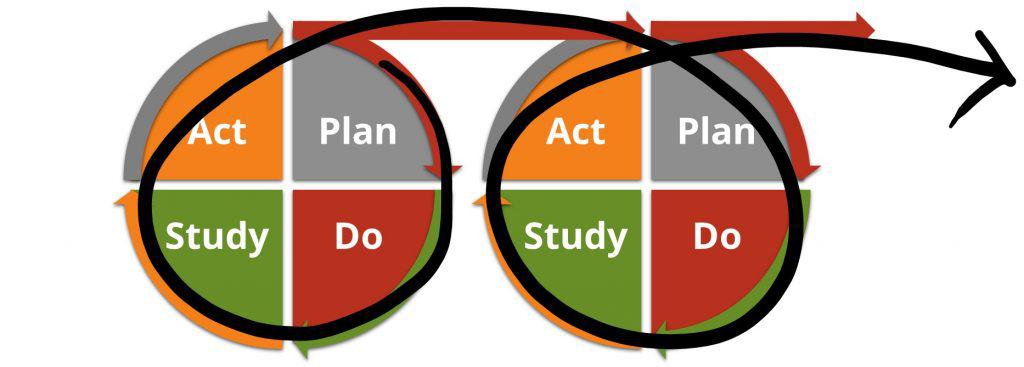
Coil of Continuous Improvement
So basically you get a coil of PDSA to PDSA to PDSA as needed to continuously improve your process.
What We Learned
There were a lot of valuable lessons from this process for us!
Keep the end of use of an item in mind when procuring it!
Through this process, we really take the end of life of things into consideration when bringing things into our home. We think about whether it’s single- or multi-use, how durable it is, and whether it can be repurposed or recycled if it’s exhausted. We choose quality over cheap.
Buy local
This applies not only to produce, but in avoiding online purchases. Buying produce from farmers markets and farm stands nearly eliminates stickers and ties, and definitely plastic packaging. Online purchases always brings in boxes and often plastic packaging. Buying local also reduces energy consumption of having things shipped individually to our home or out-of-area produce from across the country. We feel great supporting local businesses at the same time.
Buy from bulk bins
Most of the things we want and use are found in bulk bins. That being said, we’ve had to make some changes, deciding not to use certain products anymore when they aren’t available in this manner. We don’t have a ton of options right nearby us in bulk bins, so I keep a running list in my shopping app, Out of Milk, where I track what stores I can find each particular item; this way I can make shopping trips more efficient and reduce running all over the two counties to get what we need.
Make what you can
I’ve learned to make lots of things we can’t find in bulk or out of plastic, such as tofu, soy milk, soy yogurt, instant oatmeal, English muffins, vinegar, dishwasher soap, castile soap, etc. Most things really don’t take too much time, especially if you make a big batch and freeze or preserve. Every household has different needs and time, so my list won’t be your list, but making your own things from bulk bin ingredients really cuts down on garbage and recycling.
Choose reusable
This became very clear to us in the area of home improvement. We were planning on upgrading our HVAC system at some point, but through our garbage review and seeing the wasteful, non-recyclable furnace filters, we opted for a reusable filter we could clean ourselves and reuse. This applies also to painting supplies that we can clean instead of simply putting in the trash, given we have the right tools for the job, which we now have.
Reduce what comes in
The number one thing we learned is that mail creates a ton of junk, especially those clear plastic windows in envelopes! Yes, it takes time, but you can reduce junk from your mailbox by getting off mailing lists, unsubscribing from catalogs, getting magazines online, and signing up for online bill pay. This also goes for making purchasing decisions based upon packaging and deciding whether you really need something or not. A lot of the time, less is more.
Take care of our stuff
Fix things, use items as designed so they don’t break, and store things so they don’t get damaged. Yes, we’re going to drop things occasionally, but we can reduce garbage just by repairing what we have or keeping them from being broken to begin with. There are a ton of tutorials online on fixing just about anything! Storing things right especially applies to reducing food waste.
There will, unfortunately, be things that create trash
Some things just don’t come in zero- or low-waste options. We do the best we can in reducing trash in many other areas so this doesn’t have as big of an impact. There’s a lot of guilt, though, believe me, when we can’t avoid garbage, but we work through it.
Find resources for recycling things
We’ve learned there are a lot of resources for recycling, most of them free, and we take advantage of that. Light bulbs can be recycled at most hardware stores; batteries at hardware stores, battery shops, and household hazardous waste/recycling events; electronic cords can be recycled at Best Buy stores; etc. I will have a post soon all about finding recycling options.
Shred and compost unavoidable paper waste
One of the most impactful things for Alan was realizing that we can shred and compost cardboard boxes and paper and compost it. We use this in our home composting, but any overflow goes into our commercial compost bin. In our area, shredded paper included in the yard debris/food waste bin is composted into usable soil in 45 days rather than full sheets or boxes getting moldy or baled in parking lots without a recycling source. We used to fill up our recycling bin with paper, now we’ve reduced our paper trash and found a better option for recycling.
Going Forward
Our municipal garbage bin is gone! We’re keeping our recycling bin and yard/food waste bin as we do use those, albeit in small amounts. The recycling bin isn’t even half full now after six months, and while it would be great to take our recycling in ourselves, it would require sorting and storage that Alan isn’t ready to change to at this time. Maybe that will change later with another evaluation process, but one change at a time for now. We will be getting a used garbage can when we can find one on Buy Nothing and will take the garbage to the dump ourselves when it is full, in about 12 months! Instead of buying garbage bags for the can, we will use whatever odd plastic bag we have, such as large bags that potting soil came in.
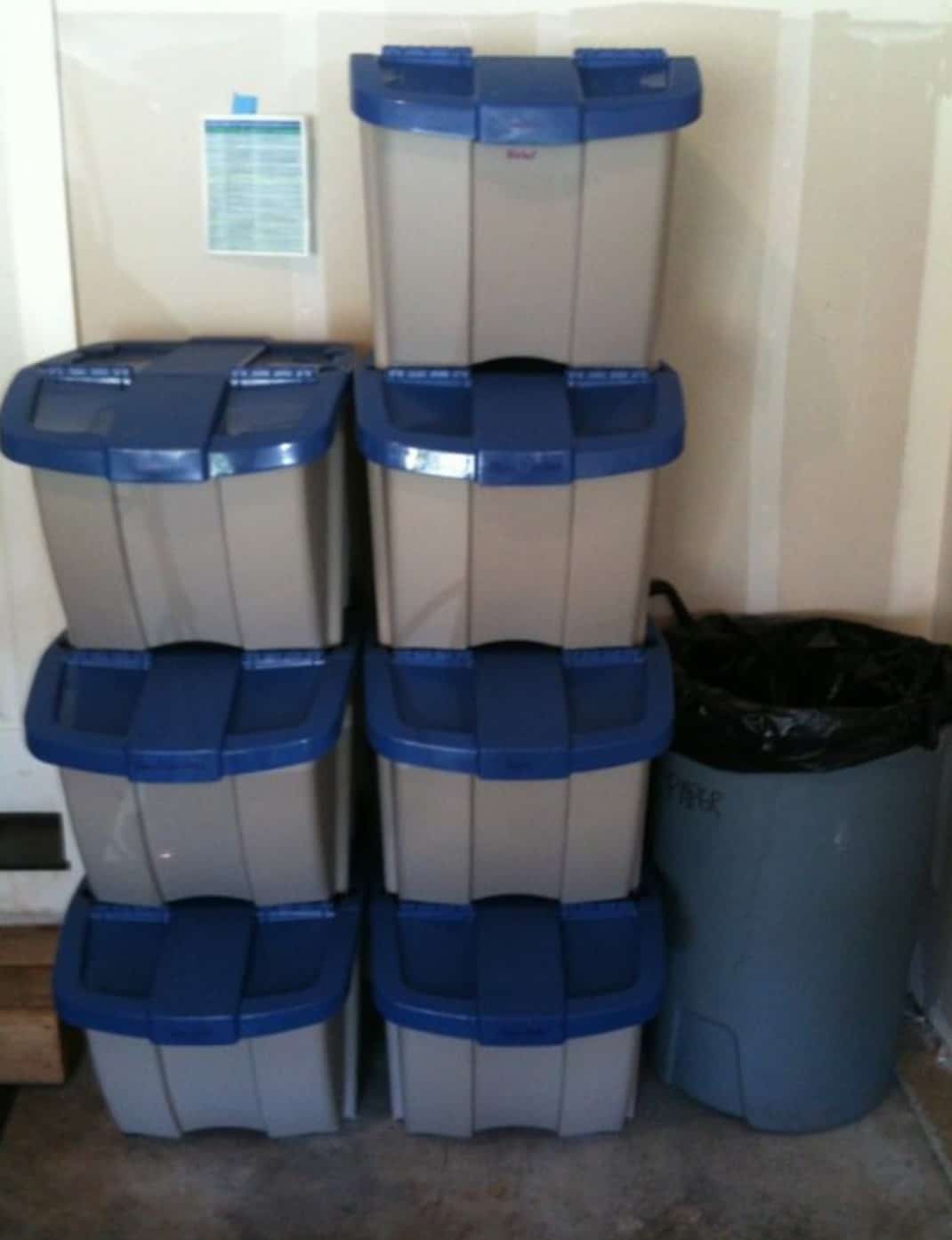
My old recycling system in my pre-Alan days! My mom now has these bins as she doesn’t have garbage or recycling service and takes her own recycling in, which must be sorted.
By eliminating garbage pickup, we are saving $9 a month, so $108 a year, but the savings is so much more than financial! We take great pride that our carbon footprint is so greatly reduced. And we love to share about it so others can make changes, even small ones, that reduces theirs as well. It is doable.
What do you think? Can you cut your garbage? What one thing can you today do to make a step in that direction?
Do you like this post? Please share....
If you liked this post, you might like one of these:
Categories:
Tags:

[Trī-māz-ing]
Cindy wants you to be Trimazing—three times better than amazing! After improving her health and fitness through plant-based nutrition, losing 60 pounds and becoming an adult-onset athlete, she retired from her 20-year firefighting career to help people just like you. She works with people and organizations so they can reach their health and wellness goals.
Cindy Thompson is a national board-certified Health and Wellness Coach, Lifestyle Medicine Coach, Master Vegan Lifestyle Coach and Educator, Fitness Nutrition Specialist, Behavior Change Specialist, and Fit2Thrive Firefighter Peer Fitness Trainer. She is a Food for Life Instructor with the Physicians Committee for Responsible Medicine, Rouxbe Plant-Based Professional, and Harvard Medical School Culinary Coach, teaching people how to prepare delicious, satisfying, and health-promoting meals.
She provides health and lifestyle coaching at Trimazing! Health & Lifestyle Coaching. Cindy can be reached at info@trimazing.com.
Subscribe to the Trimazing Blog
Receive occasional blog posts in your email inbox.
Subscribe to the Trimazing Blog
Receive occasional blog posts in your email inbox.

